Welcome to the fourth entry in August’s Medium Mod Contest. One Medium Mod will be published in every Email Alert in August. At the end of the month, we’ll hold a reader vote to determine August’s winner. Click here for information about the 2020 Mod Contest, including how to enter.
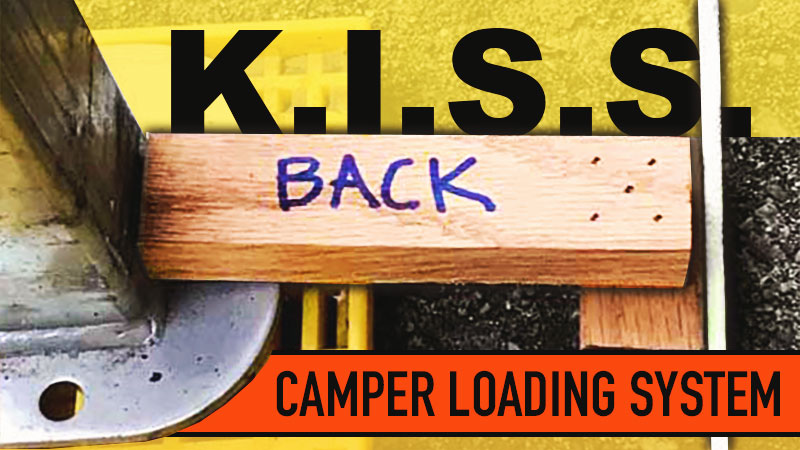
Phil and Mary Bogardus, Bothell, Washington
KISS Camper Loading System
2014 Ford F350
2018 Northern Lite 8-11 EX CDSE
Loading your slide-in camper onto your truck is probably the most stressful part of owning a truck camper. For my wife, this is the one part that causes her more anxiety, stress and creates more arguments between us than anything involved with our camper.
Like everyone new to loading a camper I went online and watched a ton of videos on how to do it. Most of the videos involved trying to line up something in your mirror with something on the camper and backing in. It sure looked easy on the video but in real life, it never, ever, ever worked out that way. I had to find a simple, consistent easy way to load the camper to make loading easier and less stressful.
The big problem with loading a camper is that you must squeeze it between the wheel wells of the truck with only inches to spare on each side. Plus the truck must start parallel to the camper as you approach it and stay parallel as the camper moves through the truck bed.
Where I found my inspiration was from Charlie Coushaine’s Laser Loading System mod. Charlie’s mod was designed to square the truck bed to the camper.
I kept thinking, “How can I easily make sure I am square to the camper without the complication of a laser?” I remembered what my Dad always told me growing up – “KISS” or, “Keep It Simple, Stupid” (or some variation of that as I got older). Taking his advice to heart I developed a simple, inexpensive, and stress-reducing solution to our problem.
Since your camper jacks are in a fixed location on the camper’s body, the edge of the truck’s tires will always be the same distance away for the edge of the jacks. By creating a visible line that is a set distance from the jacks to the edge of the tires it would allow the truck to be backed square and parallel to the camper every time.
We started with the camper loaded on the truck and the driver’s side camper jacks down, so they just touched the ground. We took a 3/16-inch by 50-foot polypropylene rope (Harbor Freight SKU 65569) and tied each end to a couple of 6-pound scuba diving weights laying around in the shop.
Any five-pound or so weight will work. You can get a used barbell weights at Play It Again Sports pretty darn cheap. You will see in my picture that I got a little fancy with this attachment, but you can just tie it on with a knot.
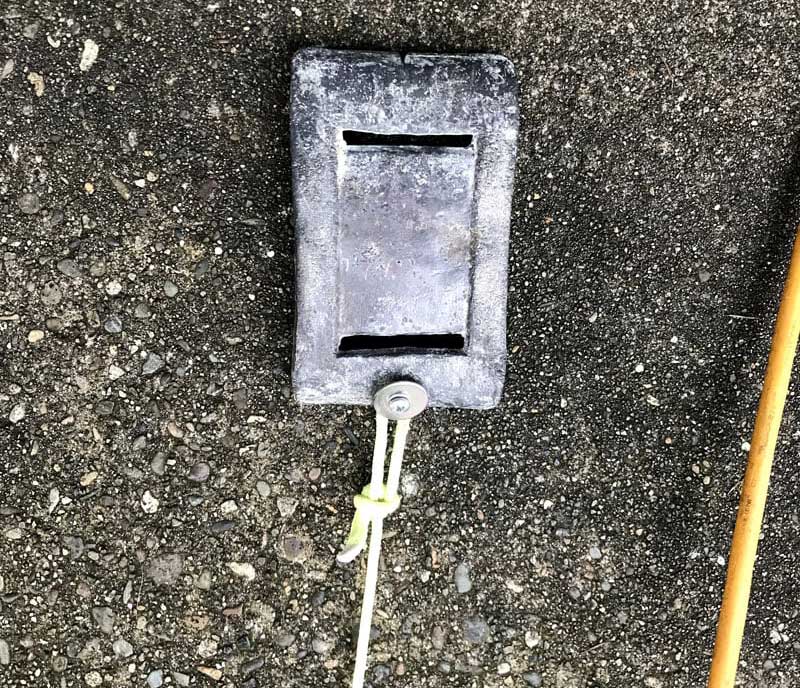
I stretched the rope from just behind the camper to be in front of the truck so that it was just touching the edge of the front and back driver’s side tires.
We then measured from the inside edge of the front and back jack legs to the rope. With these measurements, “alignment guides” were built by cutting some scrap pieces of wood to match each measurement and a short stub was nailed on to create a tee.
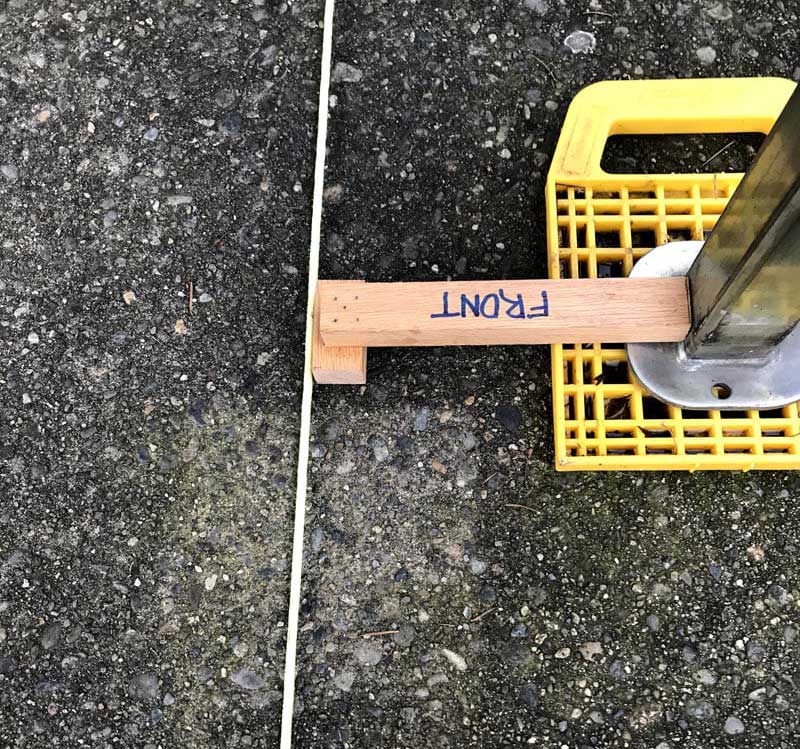
Then we marked each one with “Front” and “Back” so I knew their location.
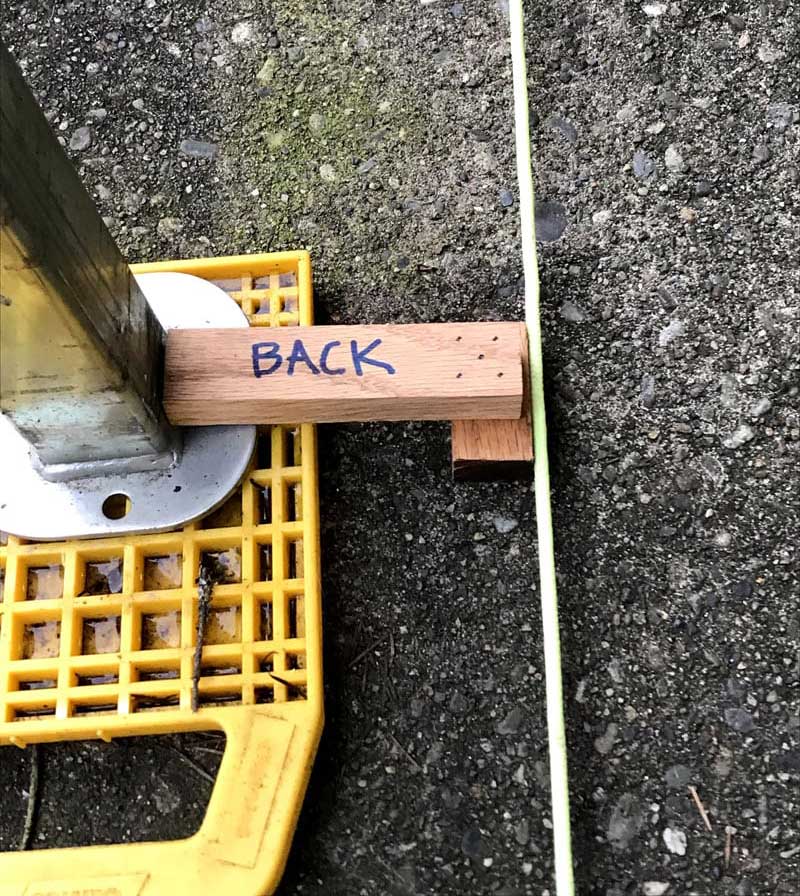
Next, I jacked up the camper and pulled the truck out. This next step may not be necessary but we find it really helps us with consistent loading. When you load the camper you want each jack’s height to be the same as when you unloaded it. It helps to align everything a little better when you reload.
We stick blue tape (it removes easily) on the camper’s body at each jack’s location and write the jack’s heights on the tape with a permanent marker.
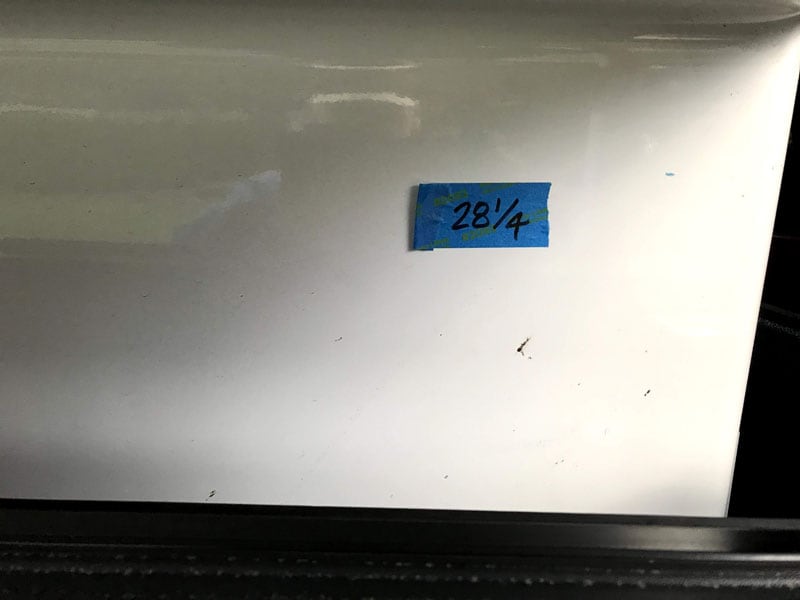
Now comes the magic. When you want to load the camper, raise your camper so that each jack matches the measurements recorded on the blue tape. Then set the appropriate “alignment guides” up against the jack’s edges.
Next stretch the rope with weights attached on each end (this keeps the rope taught) from the back of camper out to in front. We usually put all of the 50-feet of rope out and adjust the rope so that it just touches the edge of both the front and back “alignment guides”. One person can do this, but it is much easier with two. You will now have a line that will be parallel to the camper.
Before you start backing in the truck, adjust the driver’s side mirror so it is pointing straight down at the ground. This makes it easy to see where the back tire is in relation to the rope’s line.
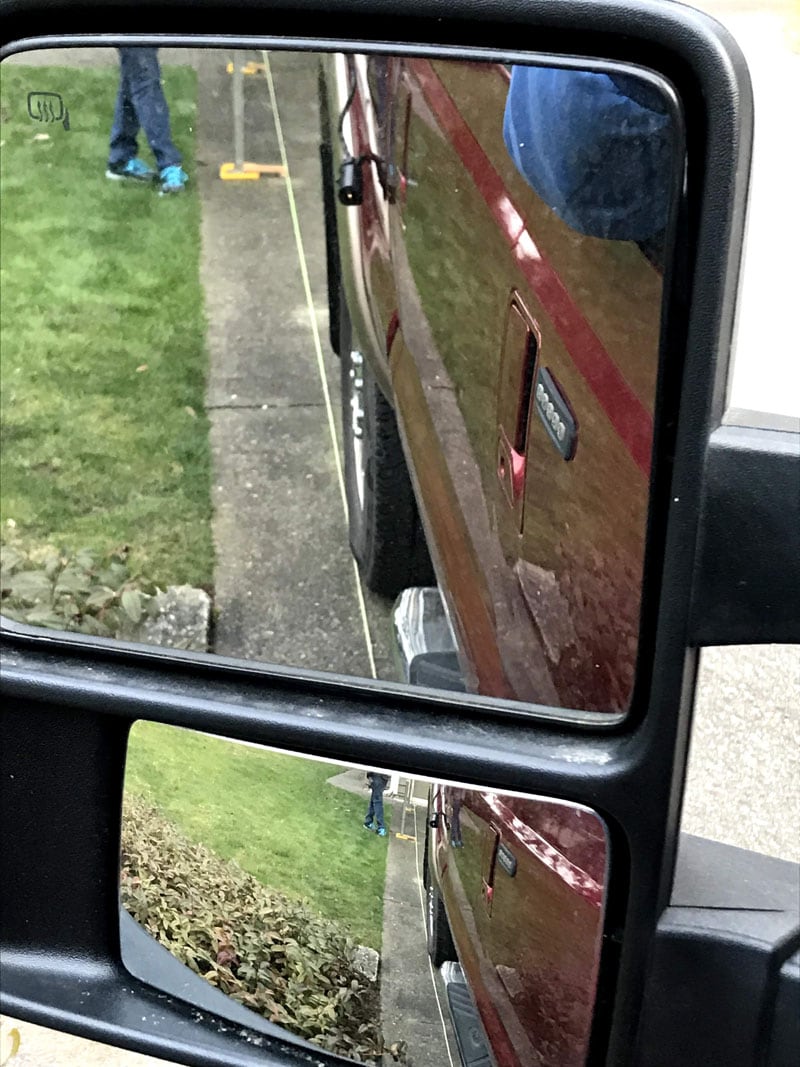
Start backing up your truck and maneuvering it until the edge of each tire is just touching the rope. This may take a little bit of jockeying forward and backward.
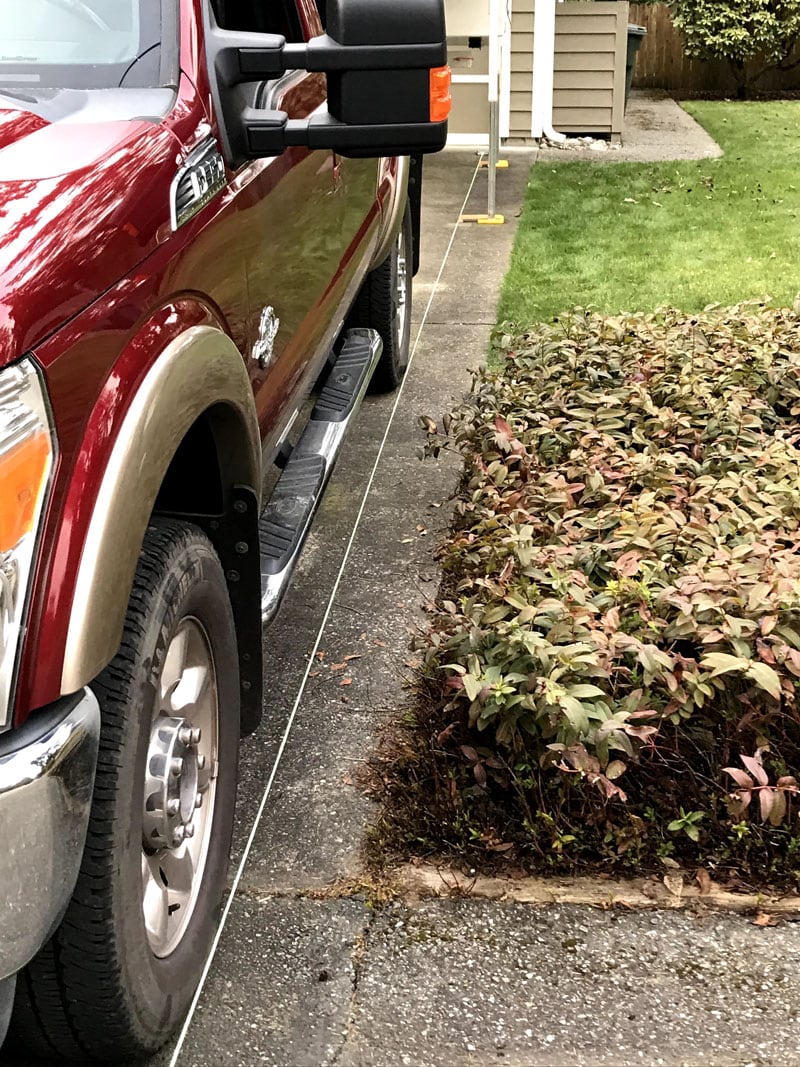
Now all you need to do is back up while maintaining each tire’s edge on the rope line.
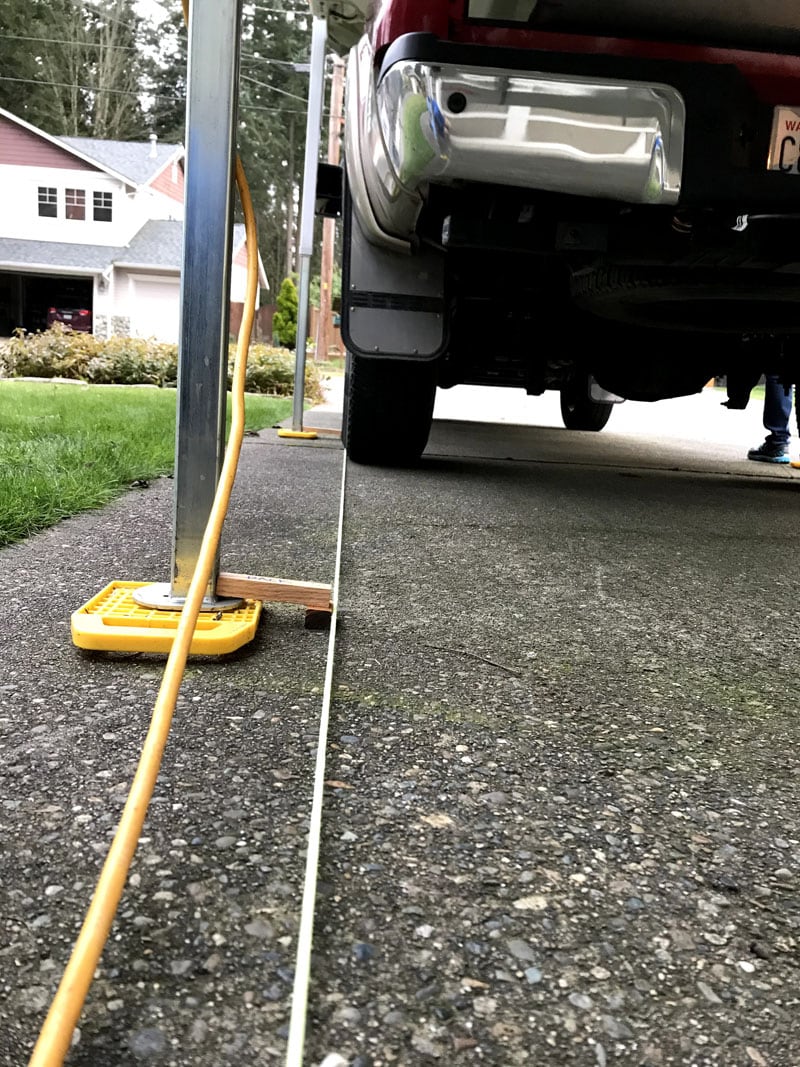
You can check the back tire in the mirror and lean out the open window to check the front tire.
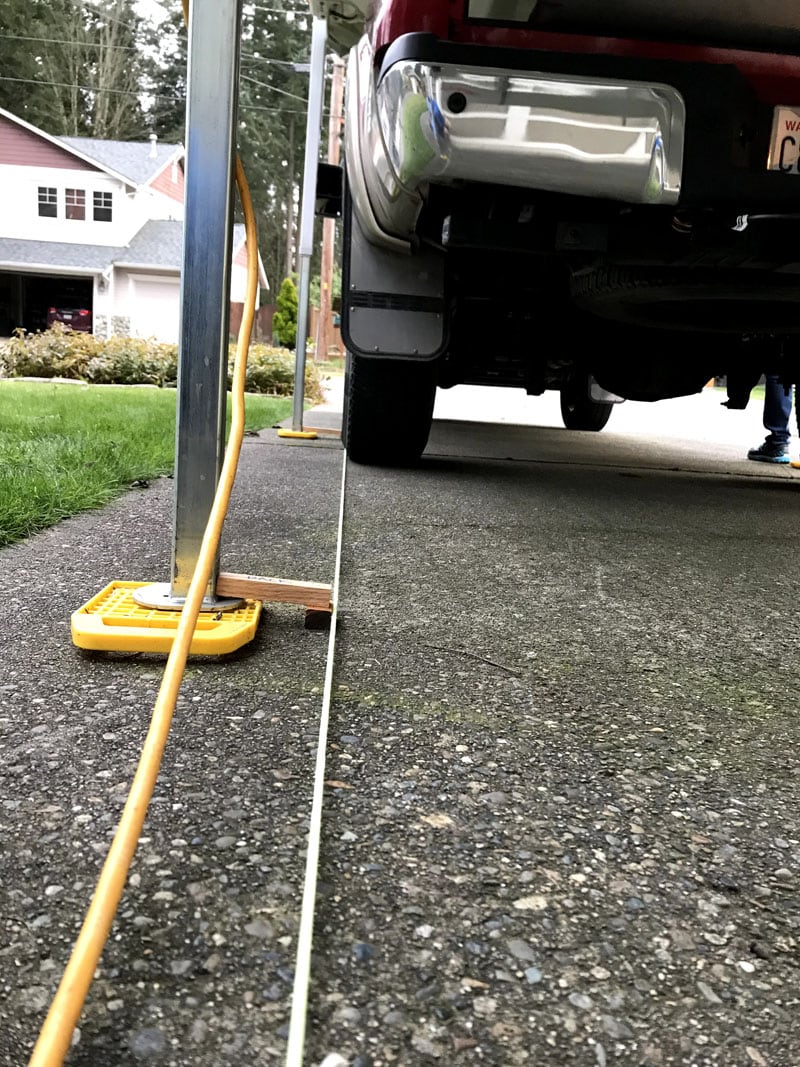
To store the rope, I made a reel to wind it up. I went to Home Depot and they gave me an empty wire rope spool for free. I put a wood dowel through the rope’s spool for a handle. Screw a washer on one end and put another screw on the other side of the spool to keep the dowel from slipping out.
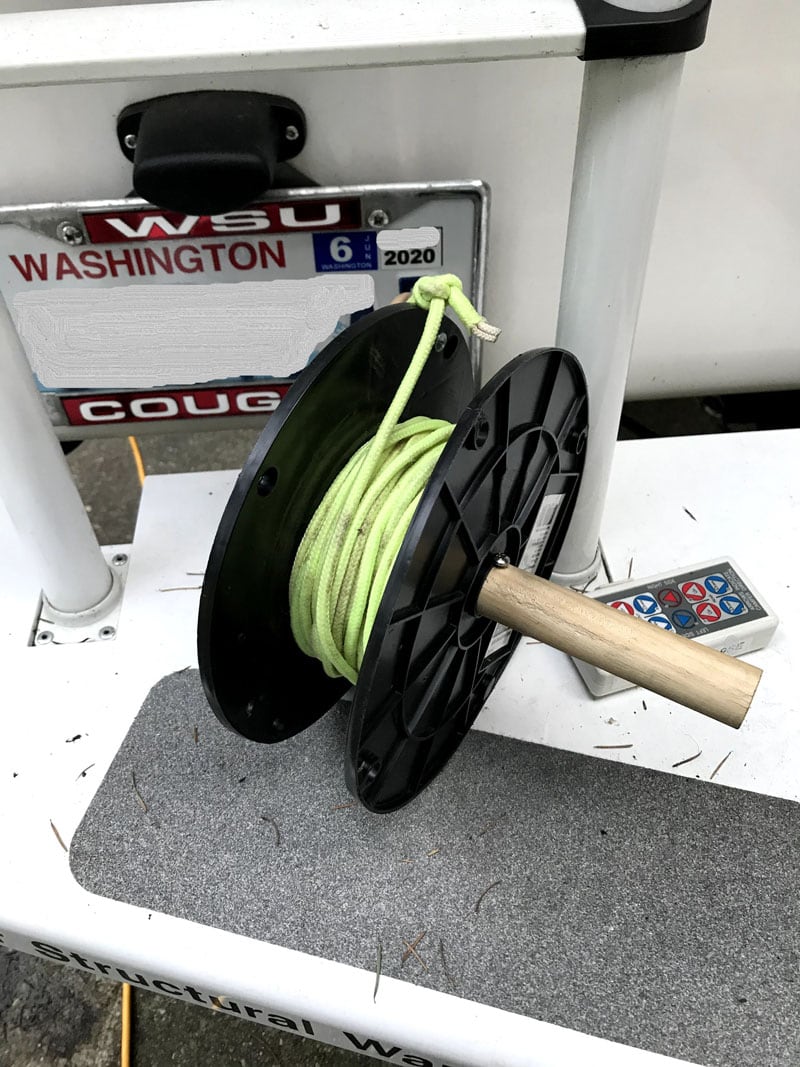
And now an important word on safety – always, always make sure you have proper clearances as you back up. As my wife always instructs me over and over and over, “Stop! Let me check!” And then I wait patiently to hear, “You’re good! Back up a little bit more.”
What she is telling me in her own sweet way is to make sure everything is aligned so that we don’t have an accident.
The KISS Camper Loading System has been fantastic. It was an inexpensive mod to build, is very simple to set up and use, and best of all, we are less stressed when loading the camper at home or at the campground.
It took me three hours to complete this modification and cost me $4 since I had the weights and wood scraps. In my opinion, the skill level of this modification is easy.
Disclaimer: The modifications above are submitted by Truck Camper Magazine readers. It is your responsibility to make sure that any do-it-yourself modification project you undertake is safe, effective, and legal for your situation.
Enter Your Mods Now!
If you’d like to enter a modification you’ve done on your truck camper, click here. You can enter as many mods as you want, at any time. Good luck mod makers!
